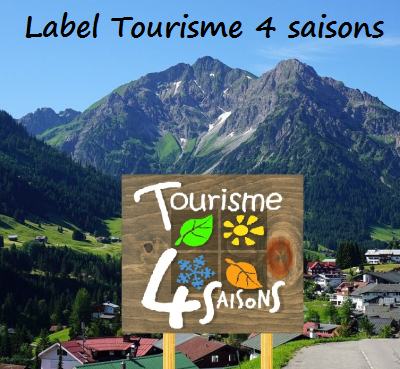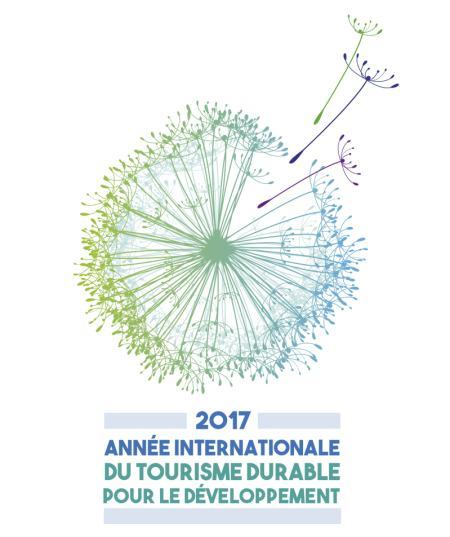
Published 2016, june, 23. Author: Coline Mionnet
Special Report – When mountain stakeholders commit
More than two months after the international meeting of the Mountain Planet, organized from 13 to 15 April 2016 in Grenoble, Innov Mountains publishes this special report on professional mountain stakeholders who invest in sustainable development, whichever strategy they use.
Let’s come back to this mountain development show, which number of visitors has increased by 35% compared to the 2014 edition, the exhibition being held in Innsbruck (Austria) on alternate years. 850 exhibitors from 32 countries and 19,000 visitors from 60 different countries were present to this international gathering for mountain planning.
Innov Mountains was there with a goal : to go meet exhibitors to learn about their sustainable development strategy, whether inside the company or included in the services or products they offer. This article provides a non-exhaustive overview of these professional players strategies, which are far more numerous.
The ropeway, a beneficial and sustainable mobility model

Ropeway of “Aiguille du Midi” 1925
If you search on the web a list of all types of sustainable or non polluting transports existing, you will finally find little that will mention lifts. In the West they mistakenly tend to be regarded as the preserve of ski areas.
Yet their dual application, urban and rural, are a fine example of sustainable mobility, including to connect highlands to valleys.
One of the first of this kind was the cable car to La Bastille in Grenoble, built in 1934 by a Franco-German consortium and renovated in 1976 by a leading ropeway company, Poma, situated in the French Alps. Since then, access to the hill and the Fort of La Bastille, located 482 meters above sea level is possible in minutes without efforts, for stunning views on Grenoble valley and its surrounding mountains. Today on the site, two via ferratas, a restaurant, a snack, a museum and Accrofort (zipline park) complete the tourist and recreational offer.
Economical, social and sustainable
Talking sustainable development, cable transport has economic, social and environmental undeniable positive impacts for the equipped territory.
Less road trafic so less pollution, less ground needed so less expropriations, more fluidity and speed in the public transport network, a construction cost of the lowest per kilometer. As many advantages that attract users and public authorities ! Indeed, compared to other modes of motorized transport (eg tramway), ropeway would consume 4 or 5 times less energy per passenger kilometer and would cost 2 to 5 times cheaper in investment, according to the association Le Chainon Manquant.
From a social and economic point of view, cable transport can play an important role. It opens up remote areas to urban centers by promoting movement of residents and visitors of these related areas, quickly, cleanly, and at an attractive rate. Urban ropeway creates a local economy around any transport network, intermodal most often. In South America, the cable car lines in La Paz and Medellin are connected to the cities metro network, complementing it.

As a result, pollution has decreased and the number of shops and tourists has risen up. In Medellin, for example, even if “efforts are still needed on inequalities”, the arrival of this new mode of transport would have favored a reduction in crime and poverty, according to Anibal Gaviria, mayor of the city.
There are few applications of ropeway transport between valley and mountain in France. Yet opportunities and projects do not lack in Grenoble, Gresivaudan or Chambery valleys. Allevard connection to the Collet d’Allevard, Uriage to Chamrousse, or Aix-les-Bains to Le Revard, it has been several years that they talk about these. But administrative and legal procedures : environmental impact assessments, public consultations and official permits, seriously slow down projects yet focused in a sustainable development strategy.
Obviously, such means of transport between valley and mountain would reduce car traffic, pollution and would also facilitate residents and tourists trips in all periods of the year in a given territory. They would probably more encourage public authorities, via grants, to foster development of a 4 seasons economy and tourism, thus sustainable for mountain areas…
Innovation as a keyword
Ropeways companies are constantly innovating. Here is a small overview of what has been accomplished by three of worldwide leaders in this sector.
Special Report -When mountain stakeholders commit
Published 2016, june, 23. Author: Coline Mionnet
Doppelmayr
Venezuela has also followed the path of urban and air transport in 2010 with the establishment of a first cable car in Caracas by Doppelmayr. This allows San Agustin residents located on Caracas hills to reach the city center by 1.8 km. A second and longer cable car was built in 2012 to connect the neighborhood of Mariche with Pablo Verde’s one. Two other lines are planned for 2016 and 2017.
Still in Venezuela, let’s go to Merida, a city of over 777,000 residents located about 1 600 m above the sea in the Andes. The Mukumbari cable car, by Doppelmayr, was opened to public on June 10, 2015 in the heart of Sierra Nevada national park. It replaces the old 1960 machine that closed in 2008 for renovation. Thus, four new back and forth cableways travel a total length of 12.5 km from the first station, Barinitas, 1577 m, to the last, Pico Espejo, 4765 m. Residents and tourists from the whole urban area take advantage of this environmental-friendly and fast mode of transport to move from one place to another, from city to mountains. The five stations were equipped with infrastructures hosting shops, restaurants and a museum. More than 100,000 visitors had already borrowed the Mukumbari after only one month of service.
In 2014, “Mi Teleferico” transportation system was put into operation in La Paz by the Doppelmayr. Today, three gondolas lines connect the plateau El Alto to Bolivia’s capital and installation of seven additional lines has been scheduled for the next three years. By two years, the city of about 2 million inhabitants has been equipped with the largest urban transportation network by cable in the world.
Another example of valley-mountain cableway : Vietnam, which has put into service the Fansipan Legend last February. It is now the longest reversible aerial tramway in the world and the biggest drop, respectively 6326 m and 1410 m, enough to make you dizzy ! With two years of construction, Doppelmayr has achieved an impressive technical challenge linking Muong Hoa valley to Mount Fansipan, regarded as Vietnam’s roof. At 3143 m above sea level, it is the highest peak in Vietnam, Laos and Cambodia. One month after opening, 40,000 visitors have borrowed the Legend Fansipan to get to this worship and tourist place in 15 minutes, instead of two days trek! Mountain becomes accessible to all, to people who are not athletes, to those who have a physical disability and to the elderly as to the youngest.
Innovation is at the heart of the sector strategies, Doppelmayr, with FMV and Illwerke, have accomplished a world first in 2012 : a 6-seater chairlift that runs on solar energy, “Hüttenkopf” in Golm ski resort in Austria. The company has adapted solar panels from Ertex Solar on the buildings of the stations, saving between a third to half of the electricity needed to operate the lift.
In terms of prowess, Doppelmayr has aimed high. To improve the Skyway Montebianco in Courmayeur, Italy, Monte Bianco Funivie company had specific requirements for this new access to the Mont Blanc. The cable car was built in two sections and was inaugurated on June 2015. Within some 4 km and a 2200 m climb, the cabin will take you to 3500 m above sea level, from Courmayeur in the Aosta Valley to the Helbronner Peak. One of the features will delight nature lovers : the stations machines are energy self-sufficient thanks to a combination of photovoltaic and heat recovery system. Furthermore, during car braking, the energy produced is redistributed to the valley to feed the grid. Not to mention the cabins rotate by 360 degrees and panoramic windows offer stunning views on the Mont Blanc landscape…
More recently, the Doppelmayr has developed the last generation of ropeways : “D-Line.” It benefits from improved comfort in cabins, more spacious, and from noise reduction. Innsbruck-Igls, in Austria, will be the first city to test the D-Line with a 10 seats cable car leading to the summit of the Patscherkofel, from 2017. Finally a European city that sets up a direct cableway to serve the near ski area !
Special Report -When mountain stakeholders commit
Published 2016, june, 23. Author: Coline Mionnet
Poma
Since 2004, the second most populated city in Colombia with 2.2 million inhabitants, Medellin, became the first city in the world to opt for mass air transportation system. Poma, French ropeway leader, was in charge to install a cable car line : the Metrocable. In 2013, Medellin was elected “most innovative city in the world” by the Urban Land Institute, the Wall Street Journal and Citigroup. And since 2015, there are now three lines of cable cars flying over the city and connecting it quickly and silently to its steep hills.
To carry on its momentum, Poma started in March 2016 the construction of a cable car in Santiago de Chile, Chile’s capital. The goal is to connect the metropolis of Santiago to San Cristobal Hill located at 880 meters above sea level, a cultural and tourist place which also houses a national zoo. The new gondola will have a flow of 1000 people per hour. It will be 2000 meters long and 200 meters high, provided with 47 cabins and put into service by mid-2016.
Development of urban cable transport seduces more and more because its benefits are better known. The first cities to have tested it have convinced those which are not equipped yet. A logical reaction since it is one of the only nonpolluting and inexpensive public transportation system.
In Bolivia, Oruro, 265 000 inhabitants, 3700 meters above sea level, has also opted for a cable car, this time coupled with a Direct Drive motor. It should be delivered by the end of this year.
In order to save energy, Poma designed the Direct Drive motor, allowing to consume 5% less electricity and reduce noise by 15 decibels. Research and development is important for the group. One of its subsidiaries, Leitwind, manufactures and installs wind, marine and river turbines. These could be used to produce hydrokinetic power thanks to rivers, notably in mountain and valley areas.
Another subsidiary of Poma, Semer, is specialized in electricity networks. It has developed Hyperview software, which controls the energy consumption of linked infrastructures and thus make significant savings in electricity bills.
Still, the innovation era is in its early stage. Poma will probably reveal this year a new kind of lift in a French ski resort.
“We have already made vehicles for the wheels in London, Las Vegas, Hong Kong, Macao… The I360 in Brighton will mark people with a world first but we want to go further by making compatible diversification of snow lifts with amusement parks. The idea is to use existing snow lifts that are untapped in summer or underutilized in winter – timetable, lack of snow- to give them a new attractiveness. During Mountain Planet, we presented the view of a cable car turned into a coaster. This is the symbol of the opening we offer and which finds a strong favour with our customers”, said Vincent Carrie, France sales manager for Poma. Here is a product likely to promote an all-year tourist attraction in mountain areas !
Besides, we cannot mention Poma without writing about its recent decision to settle its new industrial site in Gilly-sur-Isere near Albertville, in Savoie Alps. 70 000 square metre will be dedicated to this site, which will also house the production activities of its subsidiaries Comag, Sacmi and Leitwind. 150 jobs will be located there, a real benefit for the territory’s economy and employment.
Special Report -When mountain stakeholders commit
Published 2016, june, 23. Author: Coline Mionnet
Bartholet Group
Bartholet Group AG is a Swiss company founded in 1962 that became one of the international leaders in the sector of cable cars and amusement parks. Since then, the group has diversified and has several subsidiaries including Swiss Rides, Maschinenbau, Swiss Road Trains, Solar Wings and Gangloff Cabins.
Primarily, Bartholet operates in the ropeway industry all over the world. A sign that ropeway is a, sustainable way of transport : Costa Rica needed to limit the impact of mass tourism in the heart of Monteverde Forest Cloud Reserve. With the help of Bartholet, Monteverde Skytram could be opened to public in 2006. Ziplines and many suspended bridges allow visitors to discover the forest and its rich biodiversity by gaining height. The goal is not to let people shuffle along the forest in order not to damage its fragile ecosystem.

Tramway aérien de Puebla, Mexique. © 2016 Bartholet
Regarding urban cable, the group also has a say. Indeed, Bartholet has built an aerial tramway in 2010, in Durango, Mexico. Also in Mexico, they installed another aerial tramway in Puebla, inaugurated in 2015.With a length of 688 meters, it consists of two cabins with a capacity of 35 people each. Puebla believes that the new attraction will promote employment and tourism, also boosted by an investment policy into touristic accommodation and guides. The city centre being protected as Unesco Heritage, Puebla has real appeal, in 2014, it would have been visited by over a million people.
Let’s stay on the innovation topic. Along with Solar Wings, Bartholet has achieved the first solar ski lift in 2011 in Switzerland, in Tenna ski resort, with a capacity of 800 skiers per hour. Solar panels installed on top of the plant and its whole length produce 21% more electricity compared to a conventional system on roof. Indeed, on-cable modules follow the orientation of the sun all day to produce about 90,000 kWh per year, of which 22 000 kWh are used for the lift. The excess is sold to the national electricity network. This solution allows those who wish it to be supplied with solar energy. In addition, 82 panels can automatically perform micro-vibrations to get rid of snow that could affect their operation.
Still under the aegis of Bartholet, Solar Wings also builds power plants and solar parks, which productivity can be maximized by about 30% through the cable module technology, more efficient.
Another world first in Switzerland by Gangloff Cabins, a subsidiary of Bartholet : the design and manufacture of Cabrio cabins. The first cable car cabins with two stages and open air was opened in June 2012. Connecting the middle station Kalti to the top of Stanserhorn at 1900 meters above sea level, each cabin can transport 60 people in total. A spiral staircase connects the lower floor, largely glazed, to the higher open air floor that can carry 30 people.
Special Report -When mountain stakeholders commit
Published 2016, june, 23. Author: Coline Mionnet
Acceleration of year-round tourism – Chamrousse Mountain Park 2030
The town of Chamrousse leads since 2014 an ambitious project to make the ski resort in « Le Recoin » part, 1650 meters high, become the year-round “Chamrousse Mountain Park.” Last March 25, the Minister of Environment, Energy and Sea, Segolene Royal awarded Philippe Cordon, mayor of the town, with the Prize of Industrial Demonstrators for the Sustainable City.

Chamrousse Lacs Robert
This award salutes the two years background work carried on by Chamrousse team, which will receive support from the French state for five years. What makes the project so innovative? First, the integration of smart grids across the town. Chamrousse will thus be the first smart station of its generation linked to a metropolis, Grenoble. With smart grids, the mountain resort will be intellegently powered, according to needs, by renewable energy through a combination of several energy sources. A photovoltaic farm, thermal solar panels, a biomass heating plant and a heat recovery system from wastewater are planned in order to render a carbon-neutral footprint. And that is not over ! An aquatonic center with spa and outdoor pool for 2019, a pedestrian town center, a new shopping mall and 700 additional beds will also be built. As for the ski area expansion project to the Vallon des Vans sector, protected natural area, it will have to wait 2018 to be validated.
Chamrousse projet AKTIS architectes РTous droits r̩serv̩s.
“The goal is to turn Chamrousse into a year-round multi-activitiy mountain resort, welcoming customers all year and develop an annual flow, hence the new concept of Mountain Park”, said Franck Lecoutre, Director of the town tourist office, during an interview to Innov Mountains on May 26. “The resort has a considerable advantage compared with others to raise its attractiveness as it is located near the cities of Grenoble and Lyon, a 3 million inhabitants base and potential visitors,” added the director.
Mobility is also at the heart of the preoccupations for the future Chamrousse 2.0., where transition from car to pedestrian mode will be facilitated with electric bicycles and shuttles. Franck Lecoutre clarifies : “Furthermore, the cable car project between Grenoble and Chamrousse is restarted. It’s just a matter of route now, involved communities and partners think about it. “»
Chamrousse plan large РAKTIS architectes РTous droits r̩serv̩s.
With the support of the Caisse des Depots, a state-owned group serving public interest and economic development, 100 million euros will be invested in Chamrousse to make it a connected, sustainable, and round-year mountain resort by 2030.
Although the majority of the Recoin sector master plan was internally conducted by the municipal team, it was the subject of an urban planning competition in 2015 which successful winner is AKTIS architects company in Grenoble. According to the director of Chamrousse tourist office, “all the project operations meet strict environnental, technical and economical regulations.” Green building, renewable energy and digital take an important place in the project.
Chamrousse plan zoom РAKTIS architectes РTous droits r̩serv̩s.
Will the ski pass price consequently increase in Chamrousse? “No”, replied Franck Lecoutre, “it will naturally be adapted to inflation, no more.”
Already expect changes in the ski area by 2016 : the replacement of the Casserousse ski lift by a 6-seater chairlift, a new ski trail and the doubling of snowmaking capacity. »
Despite the debate about artificial snow, it has allowed Chamrousse and many other ski resorts to offer customers a snowy ski area during the winter season. It is a matter of economic survival. Indeed, ski resorts covered with snowmaking systems were able to open their trails and recruit seasonal workers in better conditions this winter 2015/2016. « Snowmaking is indispensable. In addition, the snow guns consume less and less water and compressed air or for their operation, electricity. As a reminder, there are no additives in the water », confirmed the director of Chamrousse tourist office..

Crédit photo © Jean Pierre Noisillier – Editions Clair Obscur 38330 Montbonnot
International competition between ski areas is strong. While France had lost its first place in the world ranking for winter 2013/2014, it took it back thanks to 53.9 million skier-days sold in 2014/2015. Right above the United States, which recorded 53.6 million skier-days. To remain competitive facing United States but also Austria, third in the global ranking, Switzerland and Italy, the French mountain resorts have no choice regarding investment in snowmaking….
Global warming often tends to be left behind economic imperatives. It is harder taken into account in the diversification policies of mountain tourism and in the way to produce or consume energy. Nevertheless, the project of Chamrousse Mountain Park 2030 stands out by showing a good example of smart station integrating energy transition..
Rest of the special report : When mountain stakeholders commit
EDF
Published on june, 25, 2016 by Coline Mionnet (CM)
With Axel Ferret’s interview, France sales manager of EDF Mountain Center

As a major player in the production and sale of electricity in France and abroad, EDF leads many projects of production or consumption of renewable energy, notably in mountain areas. For example, out of 62 ski resorts partners of EDF, half are committed to provide themselves with 100% renewable energy.
During Mountain Planet exhibition last April, Rhone-Alpes Auvergne board of EDF presented some of its latest projects in mountain areas, including 100% renewable energy contracts with Val d’Isere and Avoriaz ski resorts. On their stand, two agreements were also signed by Christian Missirian, director of EDF Commerce Rhône-Alpes Auvergne. The first one with Grenoble Chamber of Commerce and Industry and the second with SAEML OPTI’MO, gathering the stations connected to Valfrejus-en-Savoie and represented by its CEO, mayor of Modane, Jean-Claude Raffin.
The purpose of this contract with SAEML ? To improve energy-efficiency of rental property in Valfrejus, La Norma and Aussois mountain resorts for a period of two years. The goal is to reduce their annual energy consumption by 30% to 50%. The first hotel to benefit from this renovation will be “Le Relais de Valfrejus”, including external insulation and the installation of smart and adjustable heaters equipped with sensors.
Besides, EDF ENR announced on April 7 the launch of its new service “My Sun & Me.” Since then, the company offers photovoltaic installations exclusively for self-efficiency to all its individual customers, enabling them to produce and consume their own renewable energy.
In mountain areas, ski resorts consume around 450 gigawatt hours per year. Generally consuming more electricity, that reinforces their need to control and reduce their consumption. On the stand, Axel Ferret, France sales director of EDF Mountain Center, gave an interview to Innov Mountains. He clearly expressed his and the group’s will to help communities, businesses and individuals to reduce their energy bills.
Interview of France sales director of EDF Mountain Center, Axel Ferret (AF)
CM: Val d’Isere lifts company has been certified ISO 50001 in 2014 in order to consume 100% reneweable energy, what is new this year ?
AF: With ISO 50001 certification, Val d’Isere affirms its commitment to sustainable development by adopting concrete measures to reduce energy consumption and to bring its participation in the strugle against global warming. The ISO 50001 certification pursues an objective of continuous improvement of energy performance. It is necessary to measure its effects in time, to train staff and audits take place every three years to validate this highly innovative certification. In Val d’Isere, the improvement process is continuous, in link with EDF the mountain resort regularly introduces new targets of energy savings to be achieved. The next step will surely aim to decrease the consumption of its lifts in standby.
CM: What is the interest for EDF, producer and seller of electricity, to help customers achieve energy and cost savings ?
AF: The reason is simple, EDF is a company serving its customers and territories. Our goal is that our customers consume better and less. Over 80% of French people trust in EDF, we must continue to make this spirit of public service live. We must therefore remain what we have always been, the reference company in the energy fields. In the region of Rhone-Alpes Auvergne, nearly 20 000 people work for the group that annually invests around 2 billion euros over the territory.
CM: In addition to setting up means of renewable energy production and environmental certifications, how can we achieve more energy savings ?
AF: We estimate around 100€ per year per household the amount corresponding to “useless energy losses.” For example, a French household has between 15 and 50 devices permanently in standby. Little used, they sometimes consume as much energy on than off. Thus, an internet box consumes around 23 kWh, including 15 kWh (65%) in standby mode. Another example, as equivalent volume, an A +++ class device consumes 30% to 60% less energy than an A class device.
One of EDF’s strategies is therefore to raise consumers awareness about energy savings. In Rhene-Alpes Auvergne region, we regularly organize workshops « energy savings » in our stores or in associations to teach our customers environmental-friendly practices, for example : lower the temperature by one degree in a 80 square metre flat lowers the bill by 90 € per year.
CM: What do you think are obstacles to sustainable development in mountain areas ?
AF: Administrative and environmental procedures can be long and costly, but things are evolving. Like in Valfrejus where our regional director, Christian Missirian, signed a highly innovative convention for energy-efficiency renovation with the ski resort. Moreover, most of French alpine resorts have opted for 100% renewable energy contracts. On the contrary, coping with global warming, the mountain world is very sensitive to sustainable development. EDF stands by their side to meet this challenge.

To conclude, while today 75% of produced energy is from nuclear source, the recorded objective from the energy transition law adopted in 2015 plans to reduce this electricity production ratio to 50% in 2025. However, as announced by the government, this transition requires the construction of new generation plants to replace and close aged and costly facilities. The priority is to supply a growing energy demand, boosted by use of new technologies. In France, the consumption corresponding to all the unnecessary energy losses from our connected devices in standby during a year, would represent two nuclear power plants in continuous operation on the same period. Why, for example, do not build deep geothermal power plants instead ? The state holds 85% shares in EDF, it is the one which makes strategic decisions. Not to mention other fossil fuels, there would be 60 years left before draining all available uranium resources on Earth. Reducing the part of fossil fuels in global production, which represents about 70% in 2015, is fatal but all global players should commit in the same direction to achieve it. Will the Paris Agreement represent this commitment ?





